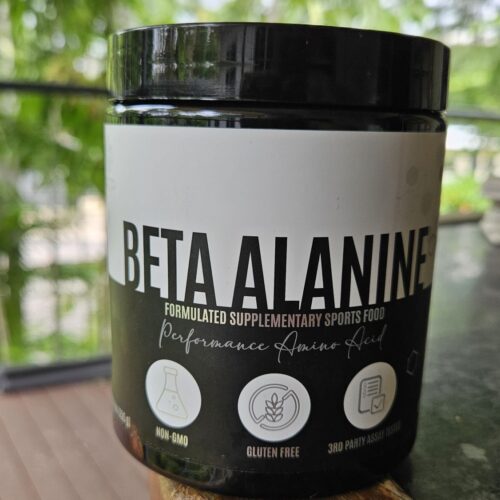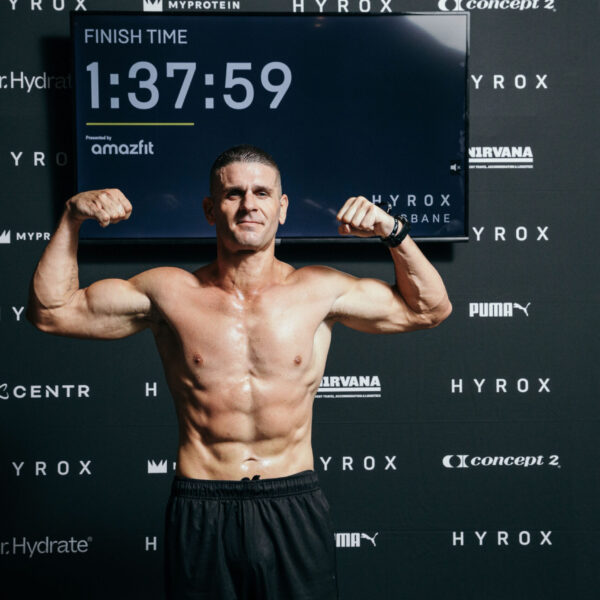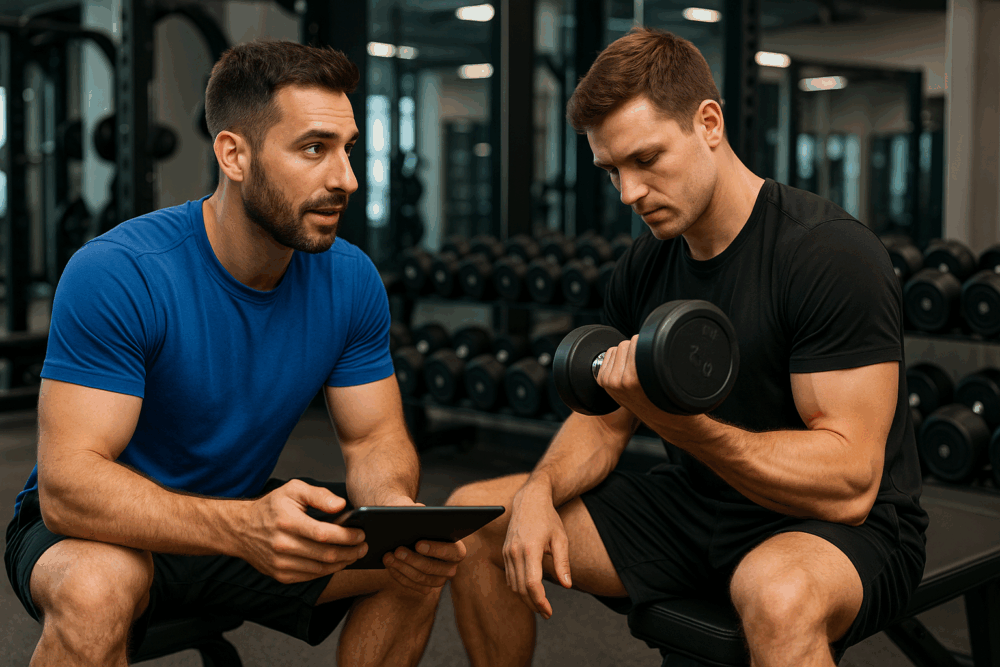When it comes to fat loss, calorie tracking is one of the most powerful tools in your arsenal. But here’s the hard truth I’ve learned from working with hundreds of clients — most people who struggle to lose weight are unknowingly misreporting what they eat.
It’s not laziness. It’s just a lack of awareness.
They think they’re eating “pretty healthy,” but when we start tracking their actual intake — properly — the real picture becomes clear.
When I first teach a client how to track calories and macros using an app, it can feel overwhelming. Scanning barcodes, weighing food, checking serving sizes — it’s a lot at first. I know how hard it is because I started tracking my calories when I worked a brutal 12-hour night shift job.
But once they get the hang of it?
They start losing weight week after week in a steady, predictable way. No more guessing. No more plateaus. Just clarity and control.
Whether you’re brand new to tracking or you’ve dabbled in it before, this guide will show you how to do it right — without becoming obsessive or burning out.
Let’sssss goooo! 👇
1. Using the Barcode Scanner Is Great — But Accuracy Still Matters
Let’s say you’re about to log 50 grams of oats (I love oats :-P). You could type “quick oats” into MyNetDiary or scan the barcode. Easy enough. Personally, I have been using MyNetDiary for almost 10 years… you can choose to use MyFitnessPal or Cronometer, it’s up to you!
But here’s the trick most people miss:
Always choose the verified entry (look for the green tick in MyNetDiary). That means the nutrition data has been checked for accuracy, not just entered by a random user.
If you can’t find an exact match (or exact brand), don’t stress — staple foods like oats, rice, and eggs have fairly standard nutrition profiles. Just pick a close verified equivalent. At the end of the day, ‘quick oats’ is quick oats… irrespective of the brand!
🎯 Small errors repeated daily can mean hundreds of extra calories per week. I usually tell my online fitness clients to try and be within 100-150 calories of their target calories… including weekends!
2. Adjust the Serving Size to What You Actually Ate
Never rely on the default serving shown in the app. It’s rarely correct.
If you’ve weighed out 50 grams of oats, make sure that’s exactly what you’re logging — not “half a cup” or “1 serving” (which can mean anything). Also pay attention to whether the entry is for the raw or cooked version of the food. This is especially important for things like pasta, rice, and meats. Cooked weight can vary massively depending on how much water is absorbed.
Now here’s a question I get all the time from my online clients:
“Brad, should I weigh my food raw or cooked?”
It’s a fair question (I asked the same question myself when I first started, too) — and the answer is raw. That’s because cooking changes the weight of food dramatically depending on how much water is absorbed or lost.
Take rice, for example. 100g of raw rice will weigh around 3x more once cooked. So if you accidentally log 100g of cooked rice thinking it’s the same thing, you’re potentially underreporting by hundreds of calories.
The same goes for meat. Grilled chicken can shrink by 25% or more during cooking — which means 100g cooked ≠ 100g raw.
So here’s what I tell every new client:
✅ Weigh your food raw whenever possible.
✅ If you’re using cooked weights, make sure you’re logging an entry that specifically says “cooked” inside your tracking app.
It takes a little practice, but once this becomes second nature, your accuracy skyrockets — and so do your results.
💥 Tired of spinning your wheels? My Ultimate Body Transformation program is for skinny-fat guys ready to finally get lean, strong, and confident.
👉 Apply now → Ultimate Body Transformation
3. Be Consistent with Measurement Units
Whether you use grams, ounces, cups, or millilitres — pick one system and stick with it.
Mixing units is a recipe for inconsistency. For example, logging “1 cup of rice” when you actually weighed 150g will throw your numbers off every time.
✅ I recommend using grams and millilitres where possible. They’re more precise and easier to replicate day-to-day.
4. Don’t Underestimate Calorie-Dense Foods
This is where tracking opens your eyes… It opened my eyes!
Some foods look innocent, but they’re absolute calorie bombs. Take a tablespoon of peanut butter (my favourite snack!) — it looks tiny, but can pack 90–100 calories. And if it’s a heaped spoon? You could easily double that without realising.
Peanut butter is a perfect example — and one of my favourite treats. Back in the day, I’d grab what I thought was “a tablespoon” 😛 … but let’s be honest — it was a heaped spoonful, every single time. I’d log it as “1 tbsp” and move on.
But here’s the catch…
👉 A level tablespoon of peanut butter is around 90–100 calories.
👉 A heaped one? You could easily be hitting 180–200+ calories — double what you logged. And nobody that I know of is digging out LEVEL tablespoons of peanut butter……. I certainly wasn’t!
When I finally started weighing my peanut butter — 15g = 1 tablespoon — I realised I was eating way more than I thought.
✅ Solution? If you’re tracking calorie-dense foods like peanut butter, nuts, oils, or cheese — use a digital food scale (I recommend something like this from Amazon). Weigh it in grams instead of eyeballing tablespoons or teaspoons. It’s quicker and more accurate than you think.
Here’s a quick hit-list of common calorie-dense culprits:
- Peanut butter, almond butter
- Olive oil & coconut oil
- Nuts and seeds
- Avocados
- Cheese and full-fat dairy
- Granola
- Dried fruits (this one catches a lot of my clients)
- Protein bars
- Smoothies with nut butter or juice
🧠 Your portion sizes might look “small” but still contain more calories than you think. If you are eating any of the abovementioned calorie-dense foods, you MUST track them diligently…..
5. Log the Extras — They Count Too
This is where most people slip up without even realising it. You could be hitting your calorie target on paper, but if you’re not accounting for the little extras throughout the day — they’re quietly sabotaging your fat loss progress.
We’re talking about those sneaky calories that creep in when you’re not paying attention:
- Milk in your coffee or tea? A couple of flat whites a day with 250ml of whole milk each could easily rack up 300 calories.
- Cooking oils? One tablespoon of olive oil = ~120 calories. And let’s be honest, who actually measures it every single time?
- Sauces and condiments like BBQ sauce, ketchup, mayonnaise, salad dressings — they might seem small, but they can easily add 50–150 calories per meal.
- “Tastes” while cooking? That cheeky spoonful of pasta, a crust of bread, or licking the spoon — yep, all of it adds up.
- Toppings — cheese, seeds, croutons, bacon bits. Delicious, yes, but easy to overdo without realising.
- Drinks — fruit juice, fizzy drinks, sweetened coffee, even those so-called “healthy” smoothies from the shop can be loaded with sugar and calories.
- Spoonful of peanut butter straight from the jar? 😏 Guilty. Just one heaped spoon can be 100–200 calories, gone in seconds.
🔥 Simple mindset shift: If it passes your lips — log it. No exceptions.
When I got serious about my own transformation over 10 years ago, I logged everything before I ate it. That means I measured out the small stuff too — like 2–3 tablespoons of milk and 2 teaspoons of sugar in my morning coffee. It might seem excessive, but it adds up fast.
When people tell me they’re in a calorie deficit, tracking everything, and still not losing weight… I dig into the details. And time after time, the truth is this: they’re not actually in a deficit. Why? Because they’re not logging all the little bits and pieces — the extras — that silently push them over their calorie target without realising.
This isn’t about being obsessive — it’s about being honest with yourself. Fat loss comes down to energy balance, and those seemingly “invisible” calories can be the difference between a lean body and constantly wondering why the scale won’t budge.
6. You Can Estimate Veggies — But Track Fruit Properly
Here’s a tip I use with my coaching clients:
Low-calorie vegetables like spinach, mushrooms, courgettes, and lettuce don’t need to be tracked with military precision. I usually estimate around 250-300 calories total for all my veg in a day and simply log it as “mixed vegetables.”
Back when I was working night shifts, I had a go-to routine: I’d bring a bag of frozen mixed vegetables to work, grab 1–2 handfuls, chuck it in the microwave for 5 minutes, and pair it with 150–200 grams of chicken or beef, lightly seasoned. Done.
In MyNetDiary, I’d just search for “Mixed Vegetables” and select around 3 cups (which for me was roughly two handfuls). Easy. No need to stress about logging every individual carrot, broccoli floret, or radish.
The key here is consistency — not perfection. Don’t let the fear of imperfect tracking stop you from making progress. Focus on the bigger picture.
But fruits are different.
Fruits like bananas, grapes, mangos, apples — and especially avocados — are energy-dense and should be weighed.
🥑 Half an avocado can clock in at 160+ calories. Worth knowing if you’re cutting. I don’t usually go near avocados, nuts, dates, or any other fruit or nut while shredding (except apples!)
7. Use the Nutrition Tab to Build Awareness — Not Obsession
Apps like MyNetDiary (or MyFitnessPal, Cronometer, etc.) are brilliant tools. They give you a full breakdown of your calories, macros, and even micros — protein, carbs, fats, fibre, vitamins, the lot.
That level of detail can be powerful… but in the early days, it can also be overwhelming if you’re not careful.
Here’s what to actually focus on for your first 2–3 weeks:
- Logging consistently, even if it’s not 100% accurate
- Weighing or measuring the key calorie-dense foods (like oils, meats, nuts, rice, pasta, etc.)
- Developing awareness of where your calories are really coming from
Think of tracking like learning to drive. You’re going to stall a few times, take wrong turns, and probably get frustrated — and that’s completely normal. Expect it.
You will make mistakes. You will eyeball a portion wrong. You will forget to log something here and there. That doesn’t mean you’re failing — it means you’re learning. The goal isn’t perfection, it’s progress and pattern recognition.
And no — you won’t be tracking like this forever.
You’re only doing this for the duration of your transformation. Once you’ve built the habits, portion awareness, and food knowledge, you’ll naturally know how to eat for your goals without the app. But in the beginning, you need this phase to level up your nutritional awareness.
💡 Going out with mates or attending a social event? Here’s what I recommend:
- Plan ahead. If you know where you’re going, check the menu in advance and pre-log your meal. You’ll feel way more in control.
- Estimate, don’t stress. Can’t find the exact dish? Find the closest match and slightly overestimate the portion size. It’s better than logging nothing at all.
- Prioritise protein. Choose the meal that has a decent source of protein — grilled chicken, steak, fish — and build your plate around that.
- Bank calories. Eat slightly lighter earlier in the day so you’ve got more flexibility in the evening. Usually one of the biggest tips that helps my online fitness clients.
- Enjoy the night. One meal or one drink isn’t going to derail you — it’s what you do consistently that matters most.
✅ Bottom line: Tracking should feel like a skill you’re developing, not a jail sentence. The more relaxed and consistent you are, the faster this becomes second nature — and the sooner you’ll be able to do it with your eyes closed.
8. Make Tracking Fast & Sustainable
As I’ve mentioned, you don’t need to track forever. But doing it properly for a few weeks can teach you more than years of guessing. Quite honestly, I wished I tracked in my 20s… the concepts I’ve taught you here are ones that I learned when I was turning 30!
Over time, you’ll start eyeballing portions with surprising accuracy. That’s when you can ease off — if you want to. This is where I am at the moment. I’ve been training consistently for 10 years and my ‘eyeballing’ game is off the charts.
If you’re following my Ultimate Body Transformation program, tracking is a key part of Phase 1. Why? Because it teaches you real nutritional awareness — no guesswork, no fluff.
9. Remember the Bigger Picture: Awareness First, Perfection Later
This journey isn’t about perfect macros or hitting numbers to the decimal point. It’s about closing the gap between what you think you’re eating and what’s actually going in.
And once that’s locked in? You’re in full control of your fat loss, muscle gain, or maintenance. As I said, aim to be within 150 calories of your target calories and 10 grams of your protein and carb targets.
🔥 Skinny Fat? Let’s Change That—For Good.
Tired of spinning your wheels with random workouts and confusing diets? My proven coaching system was built specifically for skinny-fat guys who want to build lean muscle, drop stubborn fat, and finally look like they lift.
✅ Step-by-step hypertrophy training (no guesswork)
✅ High-protein meal structure—no boring diets, no starvation
✅ 100% online with real support from me every step of the way























